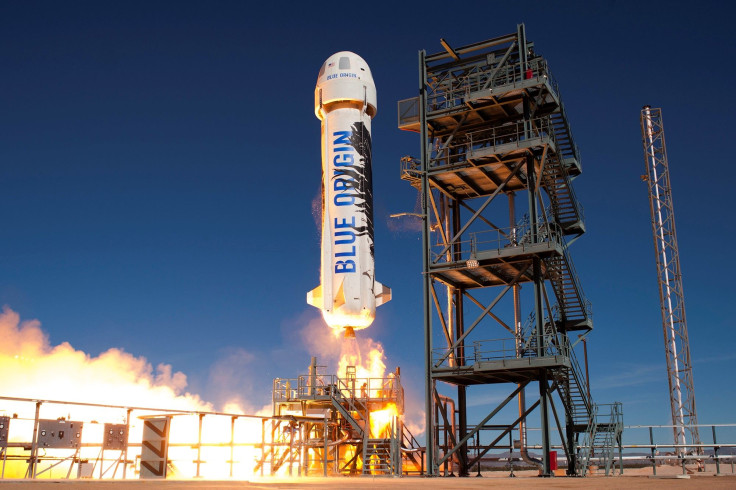Blue Origin, Jeff Bezos’ Space Venture, Successfully Re-Flies And Lands New Shepard Rocket

“The very same New Shepard booster that flew above the Karman line and then landed vertically at its launch site last November has now flown and landed again, demonstrating reuse.” Those are the opening words of Jeff Bezos’ statement on the website of Blue Origin, a space transportation company owned by the Amazon founder.
The Karman line is defined at a height of just over 62 miles and represents the boundary between Earth’s atmosphere and outer space. The rocket flew to a height of 333,582 feet (over 63 miles), before making a vertical landing at its launch pad, according to Bezos’ statement. During its previous launch in November, New Shepard had flown to a height of about 62.5 miles before landing at its launch site in West Texas.
Based on data from the successful launch and landing in November, the New Shepard “team replaced the crew capsule parachutes, replaced the pyro igniters, conducted functional and avionics checkouts, and made several software improvements, including a noteworthy one,” Bezos said in the statement.
The noteworthy change was that the rocket focused on vertical landing instead of horizontally aiming for the center of the launch pad as its landing point. According to the statement, this improved “the vehicle’s ability to reject disturbances created by low-altitude winds.”
Can a used rocket fly? Video a few technical details at https://t.co/8JUKBLg8fi https://t.co/JWpi3yGDWq
— Jeff Bezos (@JeffBezos) January 23, 2016
Yes, it can! https://t.co/SjFUXLJOnS
— Blue Origin (@blueorigin) January 23, 2016
If rockets could fly back to Earth after being launched, they could be refurbished and reused, which in turn could bring down launch costs. Blue Origin and Elon Musk’s SpaceX are both working on rockets that can be reused. After initial failures, SpaceX managed to land its Falcon 9 rocket in December. However, an attempt to land the Falcon 9 on a floating platform earlier this month ended in failure, with the rocket breaking apart.
As things stand now, the SpaceX program is more complicated, and in some ways, more advanced than Blue Origin’s, since SpaceX actually flies into outer space, instead of just touching it before making a return, like the New Shepard did.
Referring to Blue Origin’s work on orbital spacecraft, Bezos said, “We’re already more than three years into development of our first orbital vehicle. Though it will be the small vehicle in our orbital family, it’s still many times larger than New Shepard. I hope to share details about this first orbital vehicle this year.”
© Copyright IBTimes 2025. All rights reserved.



















